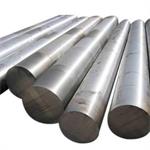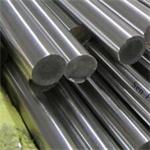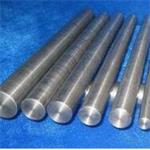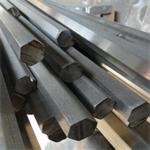300 series stainless steel rods:
Stainless steel is classified into five categories: austenitic stainless steel, ferritic stainless steel, austenitic-ferritic (duplex) stainless steel, martensitic stainless steel and precipitation hardened stainless steel.
A large number of stainless steels are used in the production of building components, decorative parts, vehicle structures, guardrails, household appliance components and casings, kiosks, telephone booths, dining utensils, medical appliances, etc., mainly austenitic stainless steel. Coupled with a large number of industrial uses, the production (or consumption) of austenitic stainless steel accounts for about 75% to 80% of the total output (or consumption) of stainless steel.
Application range:
Stainless steel has excellent corrosion resistance, formability and toughness in a wide temperature range, so it has been widely used in heavy industry, light industry, household goods industry and architectural decoration industries, but it is chosen in different environments. Different stainless steel varieties are very important.
301 stainless steel rod:

Compared with 304 steel, the content of Cr and Ni is small, the tensile strength and hardness during cold working are increased, and it is non-magnetic, but it is magnetic after cold working.
Uses: trains, aircraft, conveyor belts, vehicles, bolts, nuts, springs, screens.
301L stainless steel rod:

On the basis of 301 steel, the C content is lowered to improve the intergranular corrosion resistance of the weld; the N element is added to compensate for the insufficient strength caused by the decrease of the C content, and the strength of the steel is ensured.
Uses: Railway vehicle frame and exterior decoration materials.
304 stainless steel rod:

As a widely used steel, it has good corrosion resistance, heat resistance, low temperature strength and mechanical properties; good hot workability such as stamping and bending, no heat treatment hardening phenomenon (no magnetic, use temperature -196 °C~ 800 ° C).
Uses: medical equipment, building materials, chemicals, ship parts, auto parts food industry, household goods (tableware, cabinets, indoor pipelines, water heaters, bathtubs, etc.), agriculture.
304L stainless steel rod:

As a low C 304 steel, its corrosion resistance is similar to that of 304 under normal conditions, but it has excellent resistance to intergranular corrosion after welding or after stress relief; in the case of no heat treatment, it can also Maintain good corrosion resistance, use temperature -196 ° C ~ 800 ° C.
Uses: It is applied to field open-air machines in the chemical, coal and petroleum industries with high resistance to intergranular corrosion, heat-resistant parts for building materials and parts with difficult heat treatment.
316L stainless steel rod:

As a low-C series of 316 steel, it has excellent resistance to intergranular corrosion, except for the same characteristics as 316 steel.
Uses: It has higher corrosion resistance than 304 and 304L in corrosive media containing chloride ions. Suitable for desalination and water industry.
321 stainless steel rod:

Ti element is added to 304 steel to prevent grain boundary corrosion; suitable for use at a temperature of 430 ° C – 900 ° C.
Uses: aircraft, exhaust pipe, boiler steam drum.
To get the latest 300 series stainless steel rods price, you are welcome to contact us using CONTACT US.